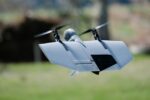In a notable development for NATO maritime operations, the Royal Navy’s Type 45 destroyer HMS Duncan has shadowed a Russian warship during its transit through the Mediterranean. This marks a significant milestone as the first time a UK vessel has conducted such an operation under direct NATO command since rejoining Standing NATO Maritime Group 2 (SNMG2). The event underscores both technological readiness and alliance cohesion amid rising tensions with Russia.
HMS Duncan and Its Role Within SNMG2
HMS Duncan (D37) is one of six Type 45 (Daring-class) air-defense destroyers operated by the Royal Navy. Designed primarily for fleet air defense using the Sea Viper missile system and SAMPSON radar suite, it also carries anti-ship and anti-submarine capabilities. The ship rejoined SNMG2 in mid-2023 as part of NATO’s enhanced forward presence in southern European waters.
SNMG2 is one of four standing maritime groups that provide NATO with immediate response capability. It operates primarily in the Mediterranean and Black Sea regions to ensure freedom of navigation and deter aggression. HMS Duncan assumed flagship duties for SNMG2 earlier this year, replacing Turkish frigate TCG Gökçeada (F-494).
The Intercepted Vessel: Admiral Grigorovich-Class Frigate
The Russian warship shadowed by HMS Duncan was identified as an Admiral Grigorovich-class frigate—likely either Admiral Essen or Admiral Makarov—both of which have been active in the eastern Mediterranean supporting Russia’s operations related to Syria and Ukraine.
This class features:
- 4,000-ton displacement
- Kalibr-NK cruise missiles (land attack/anti-ship)
- Shtil-1 medium-range SAM system
- AESA radar and sonar systems for multi-domain operations
The interception occurred during routine maritime surveillance patrols but was elevated due to increased Russian naval activity following Western support for Ukraine. The British Ministry of Defence confirmed that HMS Duncan maintained visual contact with the vessel while operating under NATO tasking rules.
Tactical Implications of Shadowing Operations
Shadowing—also known as “escort” or “monitoring”—is a standard naval tactic employed during peacetime to track potentially adversarial vessels transiting near allied waters. These operations serve multiple purposes:
- Gathering electronic intelligence (ELINT) via passive sensors
- Demonstrating presence without escalation
- Testing interoperability within alliance structures like SNMGs
- Dissuading covert activities such as underwater cable tapping or ISR missions
NATO vessels typically operate under strict rules of engagement (ROE), ensuring that these interactions remain professional but assertive. According to open-source AIS tracking data corroborated by defense analysts at Naval News and OSINT aggregators like Covert Shores, HMS Duncan maintained approximately five nautical miles distance from its Russian counterpart throughout the operation.
NATO Command Integration and Strategic Messaging
This mission holds symbolic weight beyond its tactical execution. Since Brexit, questions have lingered about UK commitment to European collective security frameworks. By placing HMS Duncan under direct NATO operational control—and not merely national tasking—the UK reaffirmed its role as a core contributor to alliance deterrence posture.
The operation also comes amid heightened tensions over Black Sea access following Russia’s withdrawal from grain corridor agreements and increased militarization around Crimea. While Turkey controls access through the Bosporus Strait under Montreux Convention limitations, allied presence in adjacent waters remains vital for ISR coverage and rapid response options.
Technological Edge: Type 45 Capabilities vs Russian Frigates
The encounter also served as an implicit comparison between Western and Russian naval technologies:
| Capability Area | HMS Duncan (Type 45) | Admiral Grigorovich-Class |
|---|---|---|
| Main Radar System | SAMPSON AESA + SMART-L long-range radar | Fregat-MAE-5 radar + MR-90 Orekh FCRs |
| Main SAM System | Aster-15/30 via Sylver VLS (Sea Viper) | Shtil-1 (naval Buk variant) |
| Cruise Missiles | N/A (no land attack missiles fitted) | Kalibr-NK LACM/ASCMs (~2500 km range) |
| CIC & Network Integration | NATO Link-16 + Cooperative Engagement Capability trials underway | Lesser integration; reliant on domestic C4ISR systems only |
This highlights how even though Russia deploys potent strike weapons like Kalibr missiles, Western ships like HMS Duncan maintain superiority in sensor fusion, air defense coverage radius (~400 km with Aster-30), and network-centric warfare integration—crucial for coalition ops.










